
IN THE EARLY SECOND century A.D., with the Roman emperor Trajan's conquests of Dacia, in what is now Romania, and Parthia, in modern Iran, the Roman Empire reached its greatest extent. Trajan was born in Spain, the first emperor to have been born outside Italy. His adopted successor, Hadrian, shored up border defenses in northern Britain by constructing a 73-mile-long wall. For much of his reign, Hadrian traveled throughout the vast empire. One of the important provincial centers he visited, twice, was the city of Viminacium, in what is now eastern Serbia.
Situated where the Mlava River flows into the Danube, Viminacium was established as a legionary fortress along the empire's northern border by the Legio VII Claudia, or Seventh Claudian Legion, which was stationed there beginning in the mid-first century A.D. At its height in the first and second centuries A.D., the legion boasted some 5,000 to 6,000 soldiers. "The legionary fortresses in the province of Moesia at Singidunum and Viminacium flanked the open Pannonian Plain, facing the threat of barbarian tribes just across the border," says archaeologist Nemanja Mrdić of Serbia's Institute of Archaeology. "Viminacium occupies the last flat area before you enter the mountains to the east."
This story is from the July/August 2024 edition of Archaeology.
Start your 7-day Magzter GOLD free trial to access thousands of curated premium stories, and 9,000+ magazines and newspapers.
Already a subscriber ? Sign In
This story is from the July/August 2024 edition of Archaeology.
Start your 7-day Magzter GOLD free trial to access thousands of curated premium stories, and 9,000+ magazines and newspapers.
Already a subscriber? Sign In

ORIGINS OF PERUVIAN RELIGION
While investigating looters' holes at the site of La Otra Banda in northern Peru's Zaña Valley, archaeologist Luis A. Muro Ynoñán of the Field Museum and the Pontifical Catholic University of Peru spotted carved blocks around seven feet below the surface.
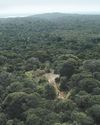
ISLAND OF FREEDOM
Many of the enslaved Africans sent to Brazil beginning in 1549 were from what is now Angola, where one of the most widely spoken languages was Kimbundu.
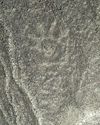
NAZCA GHOST GLYPHS
From the 1940s to the early 2000s, geoglyphs were discovered in the Nazca Desert of southern Peru depicting animals, humans, and other figures at the rate of 1.5 per year.

COLONIAL COMPANIONS
The ancestry of dogs in seventeenth-century Jamestown offers a window into social dynamics between Indigenous people and early colonists.
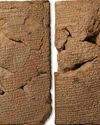
BAD MOON RISING
The British Museum houses around 130,000 clay tablets from ancient Mesopotamia written in cuneiform script between 3200 B.C. and the first century A.D.
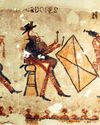
DANCING DAYS OF THE MAYA
In the mountains of Guatemala, murals depict elaborate performances combining Catholic and Indigenous traditions
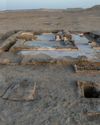
LOST GREEK TRAGEDIES REVIVED
How a scholar discovered passages from a great Athenian playwright on a discarded papyrus

Medieval England's Coveted Cargo
Archaeologists dive on a ship laden with marble bound for the kingdom's grandest cathedrals
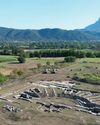
Unearthing a Forgotten Roman Town
A stretch of Italian farmland concealed one of the small cities that powered the empire
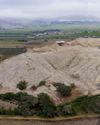
TOP 10 DISCOVERIES OF 2024
ARCHAEOLOGY magazine reveals the year's most exciting finds